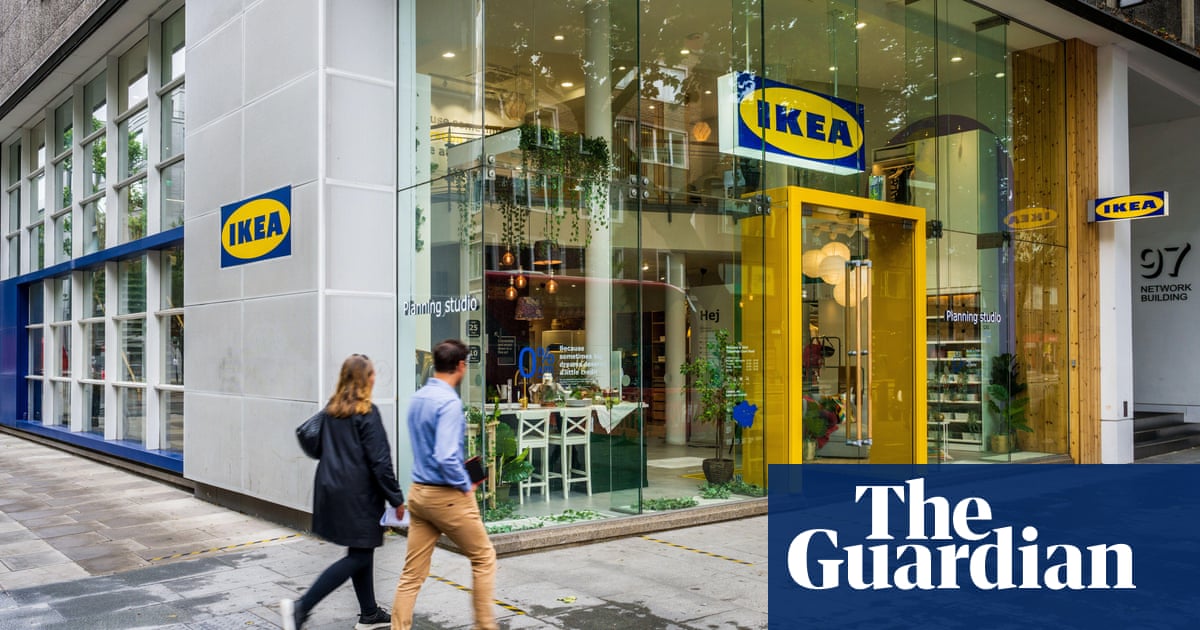Ikea replaces Topshop as furnishings become high street fashion - 5 minutes read

Show caption The Ikea design and planning store in Tottenham Court Road, central London, which closed in July but will be replaced by the new Oxford Street store. Photograph: Robert Evans/Alamy Retail industry Ikea replaces Topshop as furnishings become high street fashion Swedish chain’s move into former Oxford Street flagship store signals big shift for retail Sarah Butler Sat 30 Oct 2021 10.00 BST Share on Facebook
Share on Twitter
Share via Email
Billy bookcases, sheepskin rugs and meatballs are set to make their debut on Oxford Street. In a moment that marked a big shift in the retail landscape, Ikea announced this week it was taking over Topshop’s former flagship store in London’s most famous shopping district.
The market for furnishings and home accessories has boomed as people have worked from home during the pandemic, and there is every sign that sofas and throw cushions could soon be filling the empty floorspace left by the retreat of physical fashion retailers.
Lucy Stainton, the commercial director at the high street analysts Local Data Company, said: “Fashion has been consistently retrenching from the high street for a number of years, compounded by the pandemic with people investing less in their wardrobes as we were at home for such a prolonged period. With a number of high street fashion brands rationalising their estates either organically or through a restructuring, many units have been left vacant as a result.”
Ikea’s move into town puts it up against H&M and Zara, which have set up specialist homewares chains, as well as more traditional outlets such as Next and John Lewis and upstarts such as Anthropolgie, Arket and Urban Outfitters, which present shoppers with a lifestyle mix of fashion and home kit.
Online specialists including Made.com and Loaf have also put down markers on the high street to publicise their businesses, while the DIY specialists B&Q and Homebase are testing out small stores. John Lewis tried to draw in shoppers for its new Anyday low-price homewares range with pop-up standalone stores in some shopping centres, and is looking for more small high street spaces.
H&M has 28 H&M stores in the UK and plans more. Photograph: PR Image
H&M has 28 home stores across the UK and plans for more, having opened its first such outlet in 2019, while there are eight Zara Home outlets and the brand is putting homewares in more of its main stores.
In central London, from 2023 Ikea will offer small items to take home and showcase large furniture for home delivery. Another high street outlet is planned in Hammersmith this winter.
The Swedish furniture group has had several attempts at shifting to the high street, some of which have run aground, but the timing could now be right.
Zara has eight home stores in the UK, including this one in Brighton. Photograph: Edward Simons/Alamy
The homewares market, including furniture and accessories, is expected to grow by 9.4% this year, bouncing back from a difficult first year of the pandemic, according to GlobalData. Over the following three years, the market as a whole is expected to continue to grow by between 3% and 2.3%.
Marco Amasanti, a retail analyst at market research firm Mintel, said many people had reassessed their homes in the past year. “While much of this was limited by the immediacy of disruption, financial pressures and a reluctance to allow tradespeople into the home in the past year, it could set the market up for a windfall of new demand, such as home extensions, kitchen and bathroom renovations and garden makeovers in the coming year and beyond,” he said.
A lot of the homewares growth will be online, with almost a third of sales via the click of a mouse this year compared with just under a fifth in 2019, according to GlobalData. Online sales are predicted to rise by almost 90% to £8.9bn by 2024 while high street sales will fall by £1bn.
Topshop’s former flagship is just one of a string of fashion stores that have closed on London’s Oxford Street. Photograph: Henry Nicholls/Reuters
Patrick O’Brien, of Global Data, said Ikea’s shift to the high street was also driven by sustainability concerns, which are increasingly on consumers’ minds. The handier locations enable shoppers to get there by public transport rather than by car.
Amasanti said shoppers still value a physical store when choosing large items such as beds and sofas, which are much harder to send back if they are not suitable. He said offering services such as click and collect for small items and repairs or refurbishment could also attract buyers.
But homewares have not escaped hardship during the pandemic. Since 2019, a net 821 homewares stores have closed on high streets and in shopping centres.
Ikea’s move into Topshop’s former store will be closely watched. If it is a success, Stainton said, it could pave the way for other brands.
Source: The Guardian
Powered by NewsAPI.org